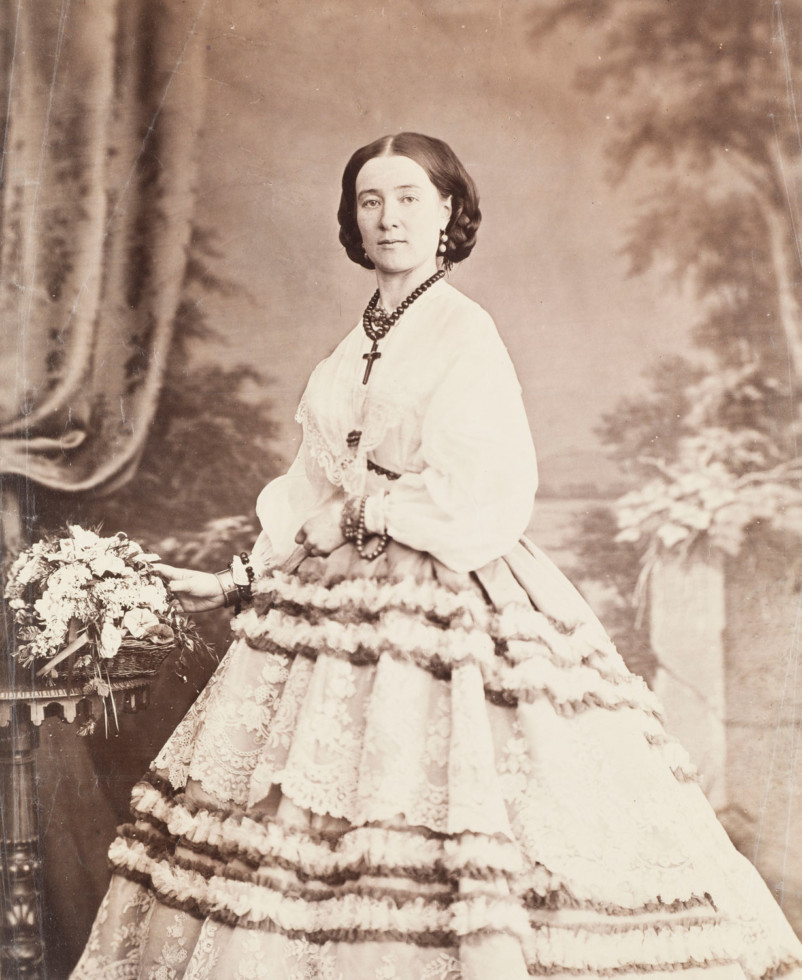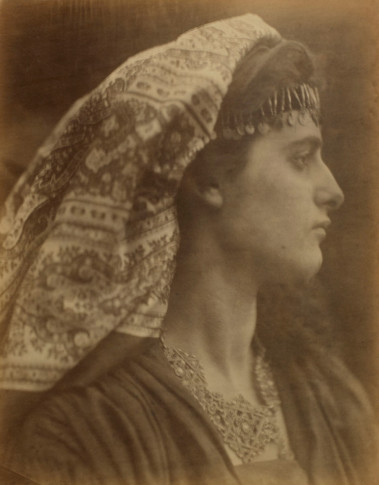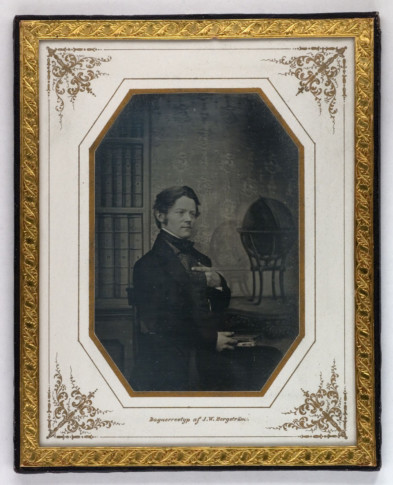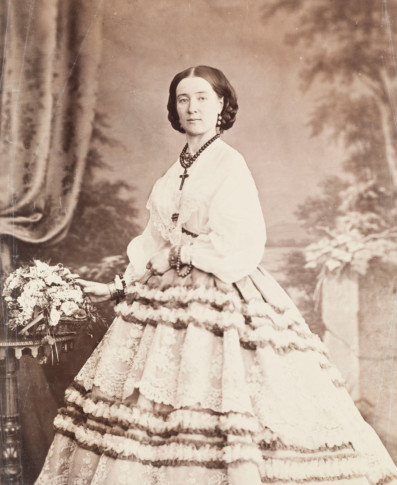
Carl Jacob Malmberg, No Title, ca 1865 Reproduction photo:Prallan Allsten /Moderna Museet
In-depth Written in Light – The First Photographers
Since its invention, photography has developed, and been used for many different aims and purposes. Today, photography is once again in a transitional period, with the breakthrough of digital images, and their omnipresence in social media. This gives us all the more reason to reflect on what the history of photography means to contemporary photographic culture.
In Victorian Britain, a small group of photographers were the very first to attempt to create and formulate art photography. One of these was Swedish-born Oscar Gustave Rejlander, who became famous for his work The Two Ways of Life (1857). This image is composed as an allegory, where the wise father instructs his two sons on the two roads in life. Julia Margaret Cameron, who was also part of this group, left behind a fantastic collection of intimate portraits of her family and large circle of friends. Her staged pictures, inspired by myths, biblical stories and English literature, have a characteristically expressive soft focus.
Thanks to the Helmut Gernsheim Duplicate Collection, and the Helmer Bäckström Photohistorical Collection, acquired in the mid 1960s, some of the most internationally famous photographers in history are represented at Moderna Museet. The collection includes examples of William Henry Fox Talbot’s salted paper prints. In 1844–46, he published what could be regarded as the first magazine featuring photographs as illustrations, The Pencil of Nature, in which he described the technique and how it could be applied. Robert Adamson and David Octavius Hill, were among those who developed the talbotype or calotype process. The two companions portrayed women and men, labourers and office workers in and around Edinburgh in the mid-1840s. Landscapes and nature scenes were popular and lucrative motifs, such as the magnificent scenery of the Yosemite Valley national park, documented in the 1860s by Carleton E. Watkins.
A useful concept when studying early photography and practices is vernacular photography, or la photographie vernaculaire, as it is called in French, meaning popular, everyday and local. Thus, it is interesting to study how the Museum’s daguerreotypes are mounted, their physical and tactile aspects, and how they were used. The daguerreotype was the first successful photographic technique, producing sharp depictions, but it was only possible to produce one exemplar of each picture. The exhibition includes a large number of exquisite portraits, along with nudes and urban scenes. All the photographs from this early period can be called “vernacular”, and they show the various purposes for which the new technique was used.
In the collection of Carl Jacob Malmberg, most image types and techniques are represented. Malmberg exemplifies how the career of a photographer could develop in the early history of the medium during the 1840s to the 1890s. In the establishment phase, photographer, copyist and retoucher were typically female professions. One of these prominent women photographers was Rosalie Sjöman, who took over Malmberg’s studio on Drottninggatan 42 in Stockholm, and ran a successful business. Other fascinating groups of photographs in the Museum’s collections are Nils Strindberg’s documentation of Salomon August Andrée’s Actic Balloon expedition in 1897. The expedition was a disaster. Strindberg’s camera and films were found in the ice, next to the dead bodies, thirty years later. The physician and anatomy professor Carl Curman was never a professional photographer, but through his practice he nevertheless made his mark on the history of photography. He engaged in medical photography, but also took pictures in Stockholm, where he lived, Lysekil, where he was a balneologist, and on his travels abroad, including the excavations in Pompeii.
In his work Jielemeguvvie guvvie sjisjnjeli (2015), Southern Sami for “film inside an image”, the Irish artist Gerard Byrne has filmed the Biological Museum, built in 1893 on Djurgården in Stockholm. He regards the building as a camera, where the large panoramic paintings by Bruno Liljefors, together with the stuffed animals, form frozen moments of Nordic landscape. The Biological Museum was one of the first to apply dioramas on a large scale. This technique had been developed by the French set painter Louis Jacques Mandé Daguerre – a pioneer of photography.
Further reading:
Geoffrey Batchen, Each Wild Idea. Writing Photography History, Cambridge, Massachusetts: The MIT Press, 2001.
Gerard Byrne, Jielemeguvvie guvvie sjisjnjeli – Film inside an Image, University of Warwick, Coventry: Mead Gallery, Melbourne: Monash University Museum of Art, 2016.
Clément Chéroux, Vernaculaires. Essais d’histoire de la photographie, Paris: Le Point du Jour, 2013.
Lena Johannesson and Gunilla Knape (eds), Women Photographers – European Experience, Göteborg: Acta Universitatis Gothoburgensis, 2003.
Anna Tellgren, Another Story. Photography from the Moderna Museet Collection, Moderna Museet: Stockholm, Steidl: Göttingen, 2011.



